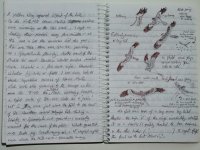John Layj
Well-known member
For those who travel abroad to see rare birds this may interest you a 50% sale on bird id books
http://www.rarebirdalert.co.uk/v2/Content/WildSounds_Summer_Sale.aspx?s_id=132057554
Thanks Adrian. I've just ordered Helm Field Guide to Birds of the West Indies to try to identify some of the beauties we saw on our hols.





